Poverty Threshold per Family per month in 2021 is estimated at PhP 10,900
The poverty incidence among families in Davao de Oro was estimated at 17.7 percent or roughly 18 out of 100 families were considered poor for the year 2021. The estimate was lower than the figure in year 2018 which was estimated at 18.6 percent or a decline of 0.9 percentage points. Similarly, the estimated number of poor families in Davao de Oro for the year 2021 is estimated at 33,570 families. (Tables 1 and 2)
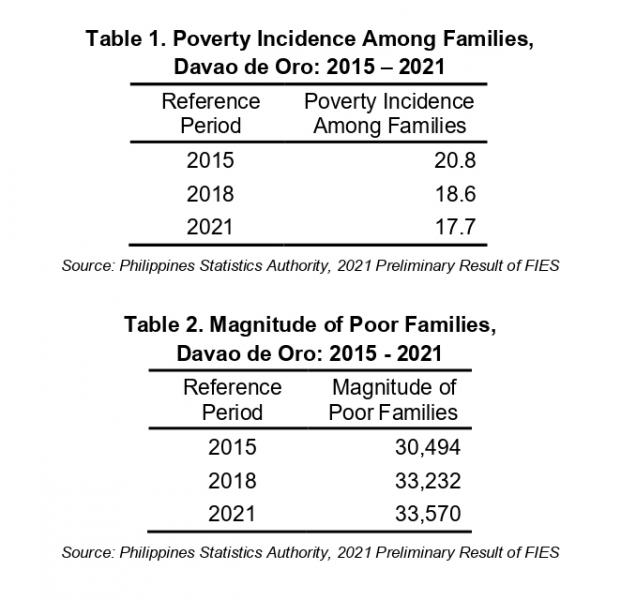
On the other hand, the poverty incidence among population in Davao de Oro was estimated at 23.9 percent or roughly 24 out of 100 individuals were considered poor for the year 2021. The estimate was lower than the figure in year 2018 which was estimated at 25.2 percent or a decline of 1.3 percentage points. Similarly, the estimated number of poor individuals in Davao de Oro for the year 2021 is estimated at 86,427 individuals. (Tables 3 and 4)
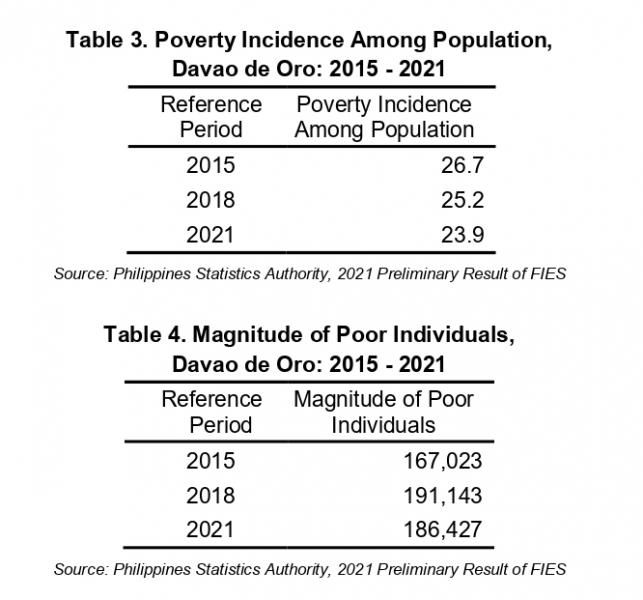
Meanwhile, the proportion of families in extreme poverty for the Province of Davao de Oro whose incomes were not sufficient to meet basic food needs stood at 4.6 percent for the year 2021. Consequently, the estimated number of subsistence families dropped by 3.9 percent from 9,055 families in 2018 down to 8,705 families in the year 2021. (Tables 5 and 6)
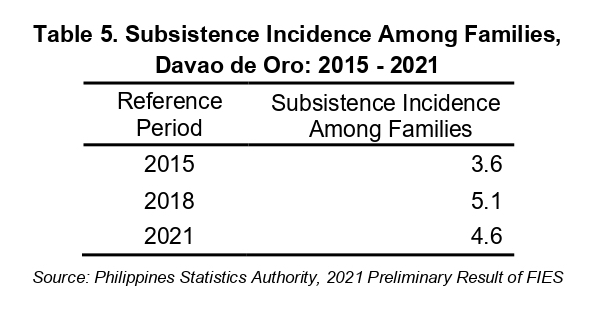
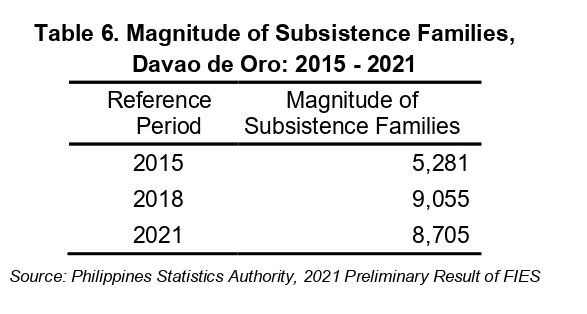
The subsistence incidence among population for the year 2021 also indicated that 7 out of 100 individuals in Davao de Oro were not able to meet the basic food and non-food requirements. This figure was lower compared with the data for the year 2018 with an estimated incidence of 7.8 percent. The magnitude of subsistence individuals likewise declined by 7.8 percent, from 58,884 individuals in the year 2018 down to 54,279 individuals in the current year. (Tables 7 and 8)
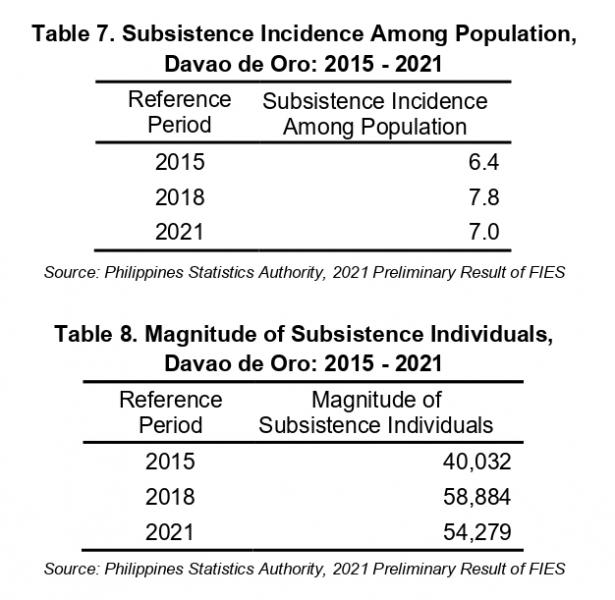
A resident of Davao de Oro needed at least PhP 2,180 to meet his or her monthly basic requirements to stay out of poverty for the year 2021. Hence, a family of five in Davao de Oro needed a monthly income of at least PhP 10,900 to meet their basic food and non-food needs. The poverty threshold increased by 1.1 percent compared with the threshold in 2018 amounting to PhP 10,778. (Table 9)

On the other hand, a monthly income of no less than PhP 1,530 was needed by an individual in Davao de Oro to suffice for his or her basic food needs. Consequently, a five-member family residing in Davao de Oro needed a monthly income of at least PhP 7,650 to meet their basic food needs. The food threshold increased by 1.6 percent compared with the threshold in 2018 amounting to PhP 7,527.
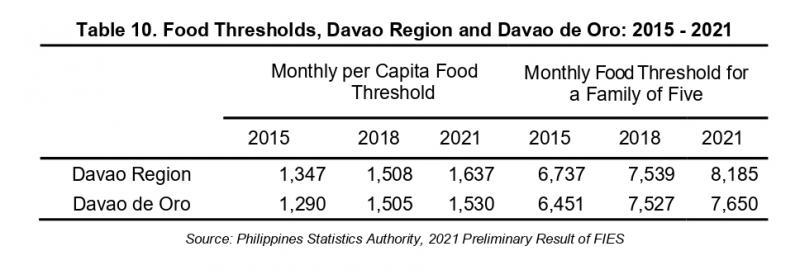
Finally, in order to get out of poverty, a poor family of five needed an average additional monthly income of PhP 2,223, or 20.4 percent of the poverty threshold. This is referred to as the income gap. The income gap in Davao de Oro was 20.4 percent relative to the poverty threshold of the province.
Technical Notes:
Poverty Incidence is the proportion of Filipino families or individuals with income less than the poverty threshold to the total number of families or individuals.
Subsistence Incidence is the proportion of Filipino families or individuals with income less than the food threshold to the total number of families or individuals.
Poverty Threshold is the minimum income required for a family or individual to meet the basic food and non-food needs such as clothing, fuel, light and water, housing, rental of occupied dwelling units, transportation and communication, health and education expenses, non-durable furnishing, household operations and personal care and effects.
Food Threshold is the minimum income required for a family or individual to meet the basic food needs, satisfying the nutritional requirements set by the Food and Nutrition Research Institute (FNRI) to ensure that one remains economically and socially productive.
